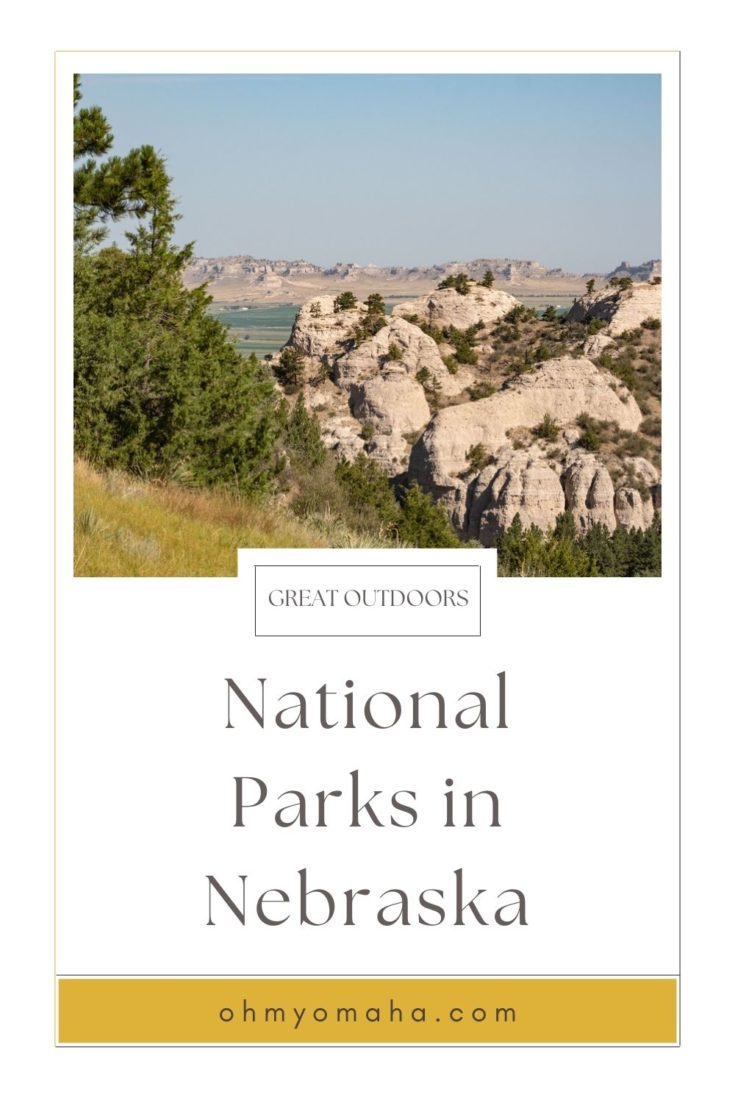Nebraska has National Parks? Yes, we have National Parks, as well as several National Historic Trails that pass through the state. What we lack in glaciers, geysers, and waterfalls, we make up for in tallgrass prairies, peaceful sandhills, and connections to the lands’ Indigenous peoples.
National Historic Park in Nebraska
1. Homestead National Historic Park
Where: 8523 West State Highway 4, Beatrice, Neb.
Significance: Beatrice is home to a national park that sits on the site of Daniel Freeman’s homestead, the location of one of the very first land parcels claimed under the Homestead Act on January 1, 1863. The Homestead Act transformed the world, inviting millions to file claims including, families, immigrants, single women, and freed slaves.
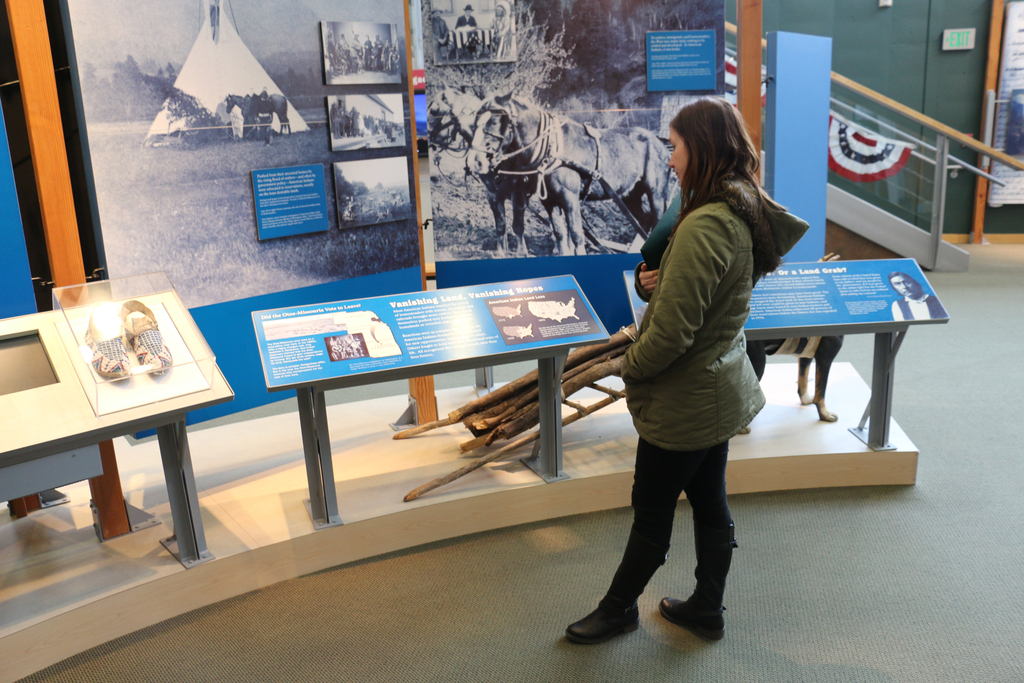
The land, long inhabited by American Indian cultures, changed forever. Homesteaders created settlements and farms, drove industrial advancement, and built our nation chasing the American Dream.
What’s there: There’s the Education Center and Heritage Center at Homestead National Historic Park, as well as 3 miles of trails through the tallgrass prairie and woodland. The Education Center has hands-on arts and crafts or living history demonstrations and science experiences, hosts temporary exhibits and special programs.
Junior Ranger Program? Yes
Operating hours: Sunrise to sunset seven days a week. The visitor center and Education Center, however, is open daily in the summer from 8:30 a.m. to 6 p.m. on weekdays and 9 a.m. to 6 p.m. on weekends. It’s closed on major national holidays. The center closes one hour earlier in the winter.
Entrance fee: FREE. All trails, visitor centers, historic structures, ranger programs and events are free.
National Monuments in Nebraska
2. Agate Fossil Beds National Monument
Where: 301 River Road, Harrison, Neb. (about as remote as you get in Nebraska)
Significance: In the early 1900s, full skeletons of extinct Miocene mammals were unearthed in the hills of Nebraska — species previously only known through fragments. These remains are on display, as well as the James H. Cook Collection of Lakota artifacts.
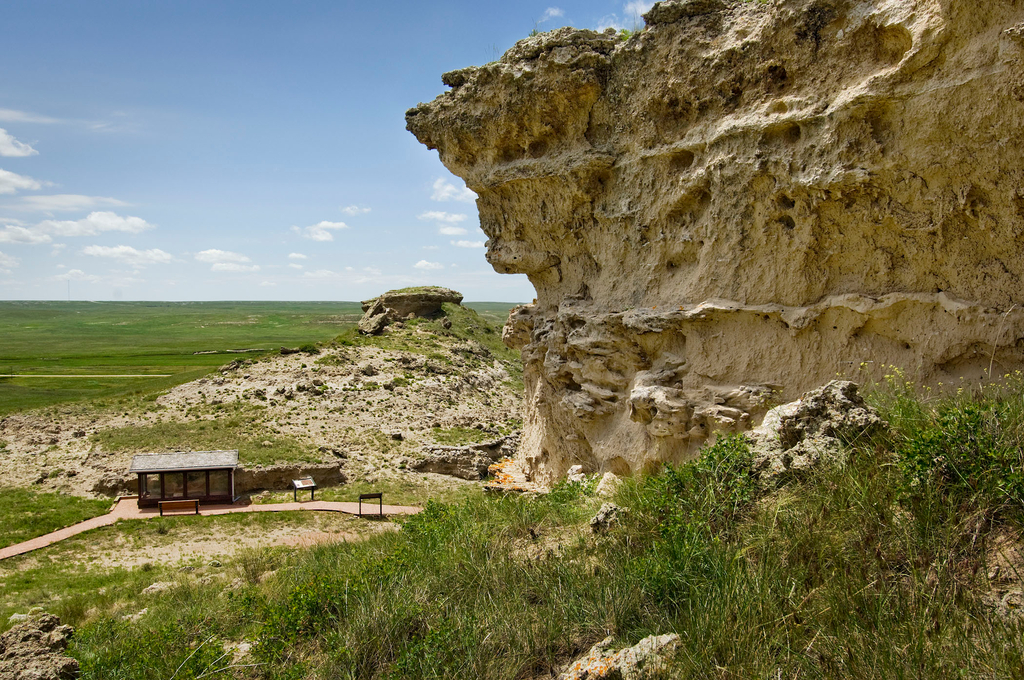
The artifacts are historically significant set of gifts from Chief Red Cloud and other Lakota and Cheyenne leaders to rancher James Cook, as they provide contextual background of the Plains Indian tribes and their struggle against European settlers invading their lands, from their point of view.
What’s there: The Agate Fossil Beds National Monument visitor center features Miocene Mammal fossils, a 12-minute movie, and the James H. Cook Collection. There are two hiking trails – the 2.8-mile Fossil Hills Trail and the 1-mile Daemonelix Trail.
Junior Ranger Program? Yes
Operating hours: Visitor Center hours are 9 a.m. to 5 p.m. in the summer and 9 a.m. to 4 p.m. in the winter (MST). Trails are open daily from sunrise to sunset.
Entrance fee: FREE, including the visitor center and trails.
3. Scotts Bluff National Monument
Where: 190276 Old Oregon Trail, Gering, Neb.
Significance: Scotts Bluff National Monument towering 800 feet tall have served as a landmark for Native Americans and emigrants on the Oregon, California and Mormon Trails. The area is rich with geological and paleontological history.
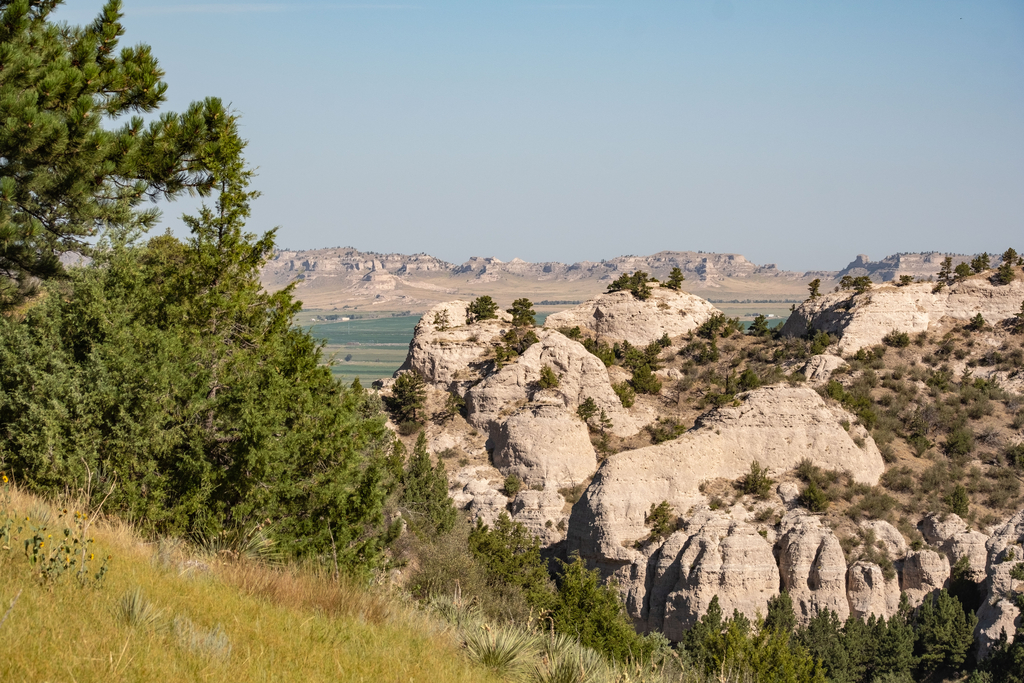
What’s there: There are about 4 miles of hiking trails, including a 1.6-mile self-guided walking tour. The William Henry Jackson Collection is on view at the visitor center. Park Rangers also lead programs.
Junior Ranger Program? Yes
Operating hours: The Visitor Center is open daily from 8:30 a.m. to 4:30 p.m. (hours extended in the summer) and Summit Road is open daily from 9 a.m. to 5 p.m. Both are closed on major holidays.
Note: Scotts Bluff Summit Road is a 1.6-mile drive to the summit of Scotts Bluff. Be aware that the road may close periodically due to weather conditions or rock slides. Trails and grounds are open from sunrise to sunset daily.
Entrance fee: FREE
National Historic Trails that pass through Nebraska
You’ll find that many of these trails overlap each other in some spots, making it fairly easy to visit historic sites for each of them. Use this guide for ideas.
4. California National Historic Trail
Where: 10 states (California, Colorado, Idaho, Kansas, Missouri, Nebraska, Nevada, Oregon, Utah, Wyoming); and the trail is not a clearly marked hiking trail. It’s a corridor that passes through communities, urban areas, public lands, and Wilderness. The route passes through some private land.
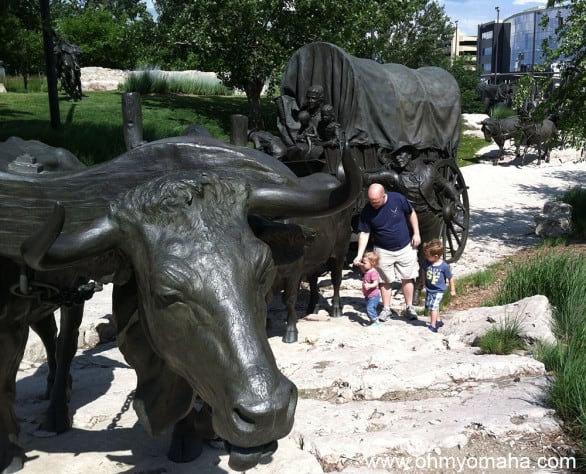
Significance: More than 250,000 emigrants traveled to the gold fields and rich farmlands of California during the 1840s and 1850s, making it the greatest mass migration in American history. The California National Historic Trail is more than 5,000 miles long and passes through portions of 10 states. You’ll see traces of these emigrants through their wagon ruts.
Nebraska places that commemorate the trail: The most notable landmark on this trail is the Chimney Rock National Historic Site in Bayard located in Western Nebraska. In Omaha, stop by Pioneer Courage and Spirit of Nebraska Wilderness between Capitol Avenue, Chicago Street, 14th Street and 15th Street. There are many, many historical markers and stops in between the two, so download this guide for full details.
Junior Ranger Program? Yes
Operating hours: 24 hours a day at most places, though the Visitor Center for Chimney Rock is closed on state and federal holidays.
Entrance fee: FREE, except where fees are charged at some trail-related federal, state, or locally owned historic sites and interpretive facilities. The Chimney Rock visitor center has a $3 admission for adults, and is free for children.
5. Lewis & Clark National Historic Trail
Where: The trail passes through 16 states (Iowa, Idaho, Illinois, Indiana, Kansas, Kentucky, Missouri, Montana, Nebraska, North Dakota, Ohio, Oregon, Pennsylvania, South Dakota, Washington, West Virginia). The Lewis & Clark Trail Headquarters is located at 601 Riverfront Drive, Omaha.
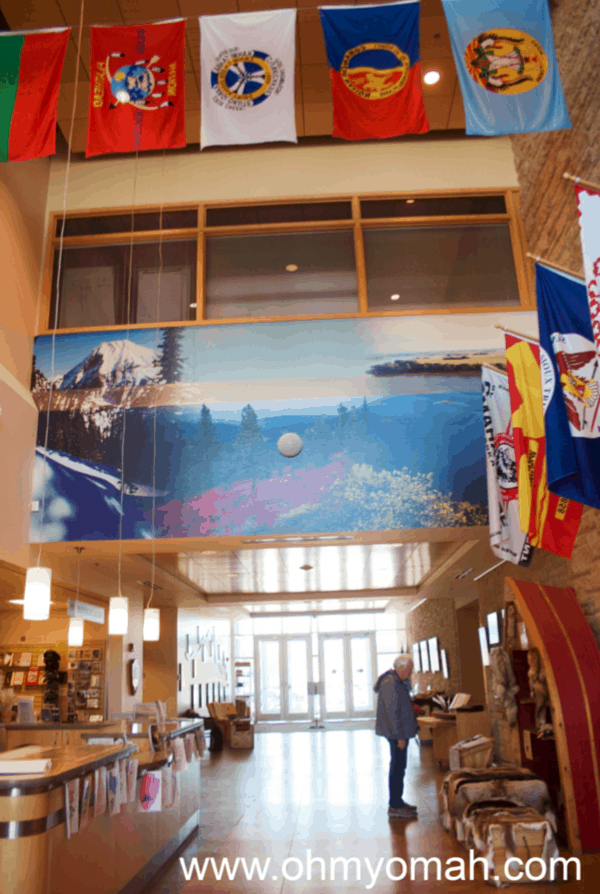
Significance: The historic trail follows the outbound and inbound routes of the Lewis and Clark Expedition as well as the preparatory section from Pittsburgh, Pennsylvania to Wood River, Illinois. It’s about 4,900 miles long, extending from Pittsburgh, Pennsylvania, to the mouth of the Columbia River, near present day Astoria, Oregon.
What’s there: There’s a wonderful interpretive center at the National Headquarters in Omaha. Inside, there are a few displays and hands-on activities, a brief movie, and a small gift shop. Outside the visitor center, there’s a short interpretive trail.
Junior Ranger Program? Yes
Operating hours: The National Headquarters in Omaha are closed on the weekends in the winter, and open from 8 a.m. to 4:40 p.m. on weekdays. Closed on national holidays.
Entrance fee: FREE
6. Oregon National Historic Trail
Where: The Oregon National Historic Trail passes through seven states (Idaho, Kansas, Missouri, Nebraska, Oregon, Washington, Wyoming). It is not a clearly marked hiking trail. It’s a corridor that passes through communities, urban areas, public lands and Wilderness.
The route travels across a variety of land ownerships and management, including private land. Each location varies as to the hours of operation and access.
Significance: Early American settlers made the 2,000-mile trek to Oregon in hopes of finding lush farmlands and a new life. Along the historic trail, you can still see traces of these emigrants as well as trail ruts.
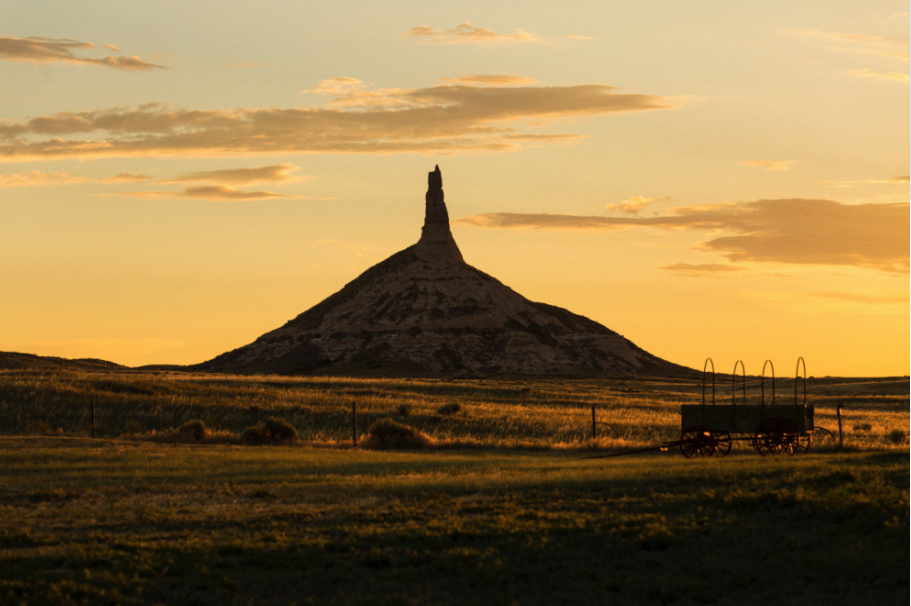
Nebraska places that commemorate the trail: The most notable Nebraska landmarks on this trail are Courthouse and Jail Rock, as well as the Chimney Rock National Historic Site in Bayard located in Western Nebraska. Rock Creek Station Recreation Area near Fairbury in eastern Nebraska has very visible deep ruts from wagons that had traveled the Oregon Trail.
Find ideas for stopping points in this trails guide.
Junior Ranger Program? Yes
Operating hours: 24 hours a day, though some locations managed by entities may have different hours of operation.
Entrance fee: The trail itself is free.
7. Mormon Pioneer National Historic Trail
Where: The Mormon Pioneer National Historic Trail passes through five states, including Nebraska, spanning more than 1,300 miles (Illinois, Iowa, Nebraska, Utah, Wyoming)
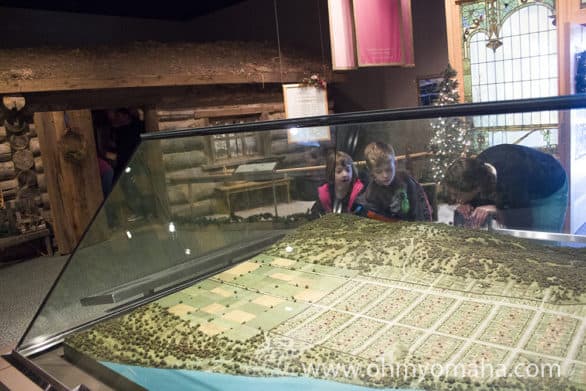
Significance: The historic trail follows the route the Mormons took when they fled Nauvoo, Ill., to the Great Salt Lake Valley in 1846-1847.
Nebraska stops: I recommend the Mormon Trail Center at Historic Winter Quarters, 3215 State St., Omaha. Several places to spot ruts along the trail, including The Sand Hill Ruts near Sutherland. See more stops in this trails guide.
Junior Ranger Program? Yes
8. Pony Express National Historic Trail
Where: The Pony Express National Historic Trail passes through eight states with sites scattered over 1,800 miles (California, Colorado, Kansas, Missouri, Nebraska, Nevada, Utah, Wyoming). It’s not a continuous traditional trail. Instead, it’s many trail traces, structures, graves, landmarks, and markers left on the landscape to remind us of the history.
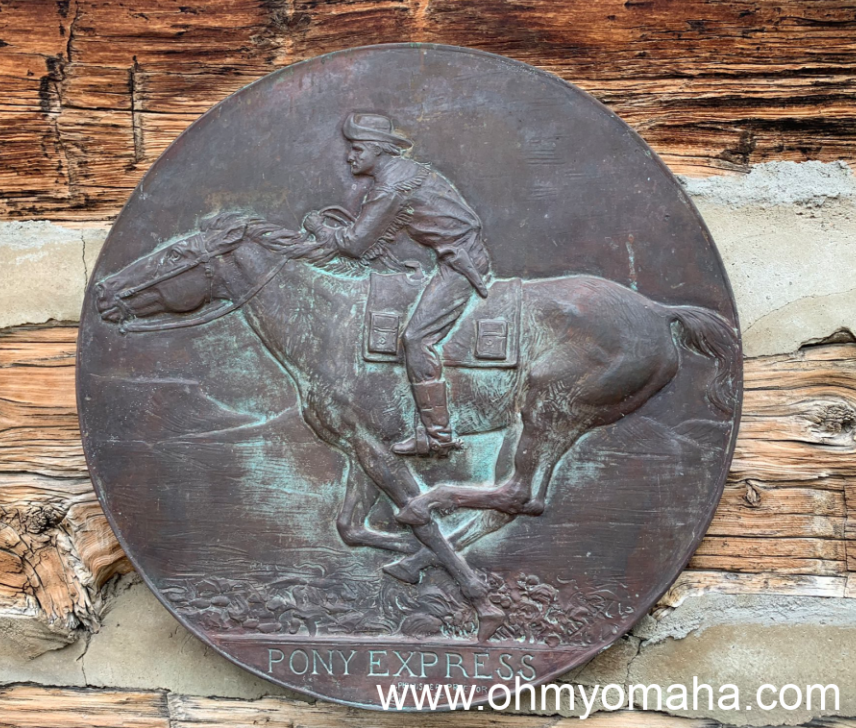
Significance: The short-lived Pony Express is remembered in this historic trail. For just 10 days, young men rode horses as a way to deliver east-west communications before the telegraph.
Nebraska stops: One quick stop is the Gothenburg Pony Express at Ehman Park, NE-47 and 15th Street, Gothenburg, where you’ll find a small museum. There are other stops in Cozad (Willow Creek Pony Express Station on Eighth Street)
Junior Ranger Program? Yes
National Recreational or National Scenic River in Nebraska
9. Missouri National Recreational River
Where: Two states (South Dakota and Nebraska); Missouri National Recreational River Headquarters are in Yankton, S.D.
Significance: North America’s longest river has two free-flowing stretches that make up the National Park. Exploring the river there offers a glimpse into what the untamed American West once was.
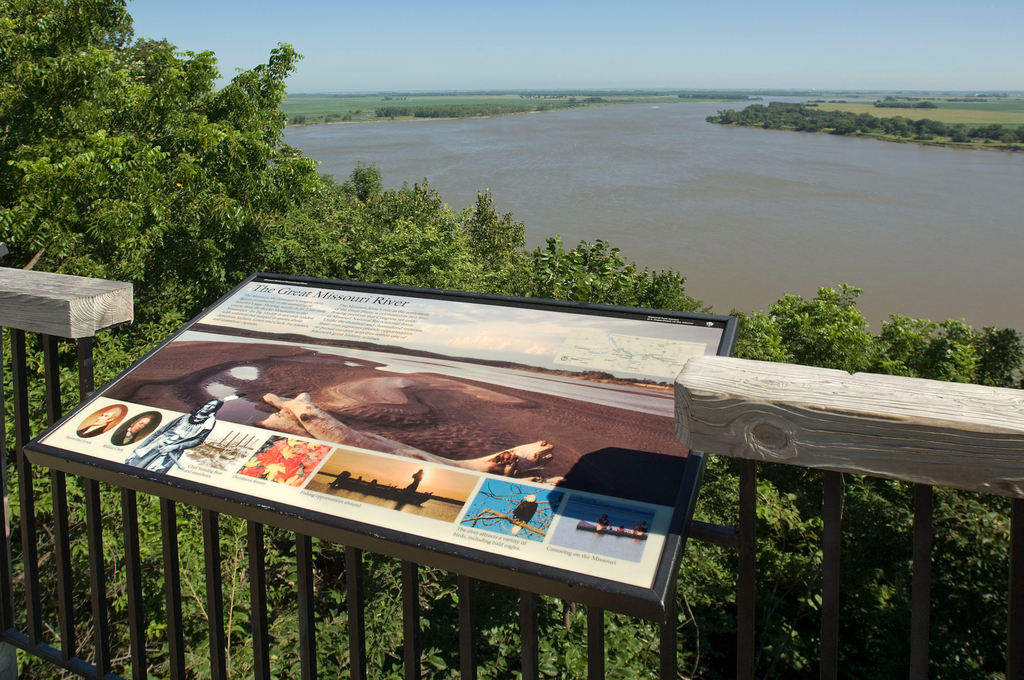
What’s there: There’s plenty to do. You can paddle the two free-flowing sections of the Missouri River, camp, or go birding. There are also trails along both the 39-Mile District and the 59-Mile District. There are also Ranger-led programs at the Lewis and Clark, Niobrara, and Ponca State Parks, and Army Corps of Engineers campgrounds throughout the summer.
Junior Ranger Program? Yes
Operating hours: The entire park includes the 39-Mile District and 59-Mile District is open 24 hours, seven days a week.
Entrance fee: FREE, except portions where the river passes through state parks.
10. Niobrara National Scenic River
Where: Valentine, Neb.
Significance: Perhaps one of the most beautiful stretches of water in Nebraska (or at least, IMO), the Niobrara National Scenic River is significant more for its recreational offerings and waterfalls than historical significance.
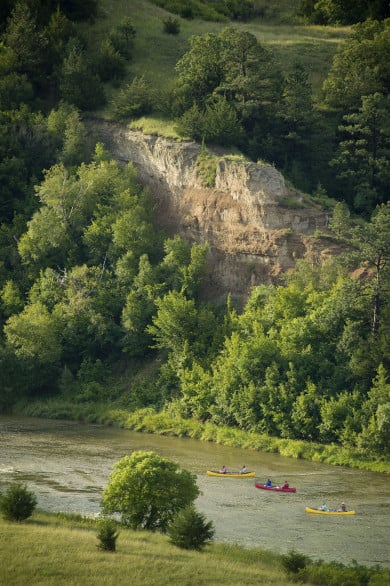
What’s there: It’s 76 miles of protected river the passes cliffs, Smith Falls State Park, and more. Use this Niobrara guide to plan a canoe trip (especially with little ones).
Junior Ranger Program? Yes
Operating hours: The river itself is open 24 hours a day, except the portion that flows through Fort Niobrara National Wildlife Refuge. The river in that stretch is open from sunrise to sunset.
Entrance fee: It’s free to enter the Niobrara NSR. However, because the National Park Service does not own the land along the river, so individual sites and private landowners may charge a fee. You’ll need to find a private outfitter to help make it easy for you to explore by canoe, kayak or tube.
Nebraska National Forests and Grasslands
Technically, the state’s National Forests and Grasslands are also located in South Dakota, but I’ll just focus on what’s in Nebraska. Most national forests and grasslands are free to visit, though some activities may require a fee or permit.
11. Oglala National Grasslands
Where: Information Center is at Pine Ridge Ranger District,16524 Highway 385, Chadron, Neb.
Significance: The Oglala National Grasslands is a pretty unique area consisting of native mixed-grass prairie, with forested streambeds and steep, worn, formations created by water and wind erosion on layers of siltstone, and clay.
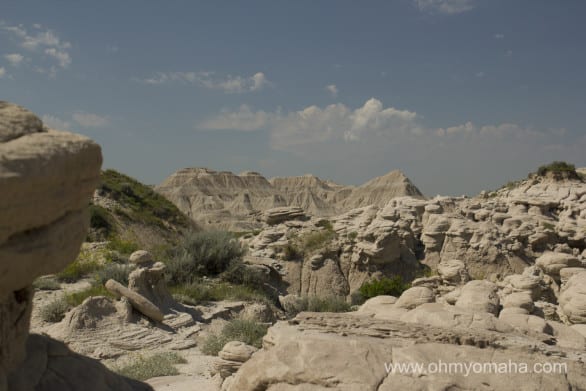
What’s there: This is the best place in the state to view pronghorns and a popular place to view prairie dog colonies along the site’s northern border. Oglala National Grasslands features prairies as well as Toadstool Geological Park and The Hudson-Meng Education & Research Center.
The Hudson-Meng is considered one of the most important paleo-archeological discoveries in North America. Visitors can tour the bonebed enclosure and discover the mysterious past of the Bison antiquus (extinct bison) that died here. However, it’s closed until further notice.
12. Nebraska National Forest at Halsey
Where: Information Center is at Bessey Ranger District, 40637 River Loop Road, Halsey, Neb.
Significance: The Bessey Ranger District is well known for being the nation’s largest hand-planted forest. The area of this National Forest also encompasses the Nebraska Sandhills, a region that’s one of the largest contiguous and least-disturbed prairies in all of the United States. The Sandhills are home to a large complement of wildlife: birds, bugs, reptiles, and mammals.
What’s there: This is a great area for recreation, and includes the Middle Loup River for tanking and the Dismal River OHV Trail for ATVs. Take in the view at Scott Lookout Tower.
13. Nebraska National Forest at Chadron
Where: Information Center is at Pine Ridge Ranger District, 125 N. Main St., Chadron, Neb.
Significance: Special places within the National Forest Chadron area include Soldier Creek Wilderness and the Pine Ridge National Recreation Area as well as several developed recreation sites for camping, picnicking, or trailheads for access to miles of trails into the wide open spaces of the Nebraska National Forest.
What’s there: There are more than 80 miles of marked trails in the Pine Ridge Trail system for hikers, bikers and horseback riders. Soldier Creek has 17 miles of trails.
14. Samuel R. McKelvie National Forest
Where: Information Center is at Bessey Ranger District, 40637 River Loop Road, Halsey
Significance: Samuel R. McKelvie National Forest is a large, 116,000-acre forest that shows off the unique Nebraska Sandhills prairie ecosystem.
What’s there: The Niobrara River Canoe Launch on the Niobrara River is used for small water craft. Fishing is available in the nearby Merritt Reservoir. Merritt is also notable for stargazing.
Operating hours: 24 hours a day
